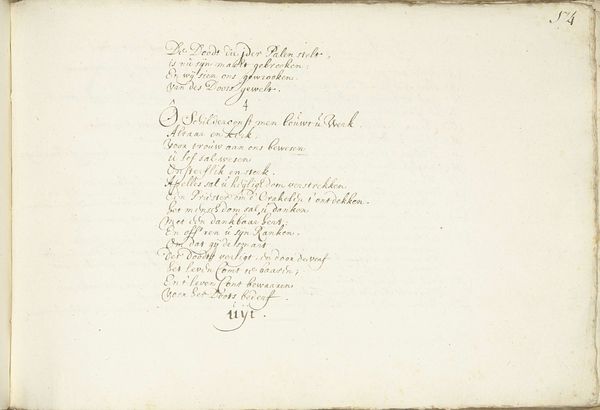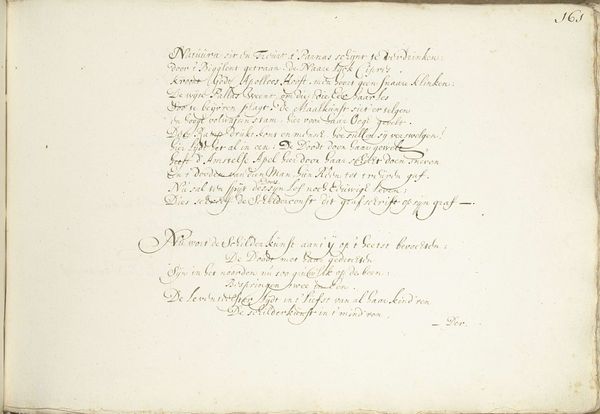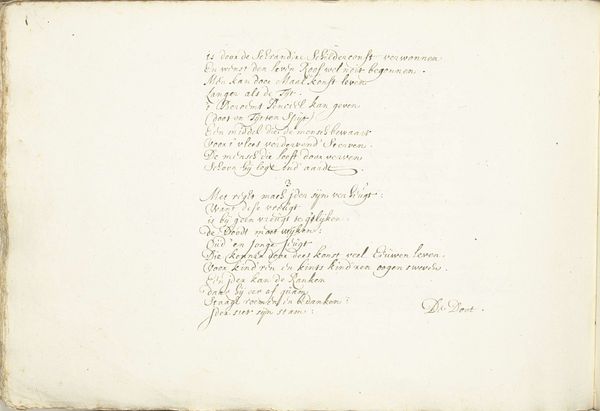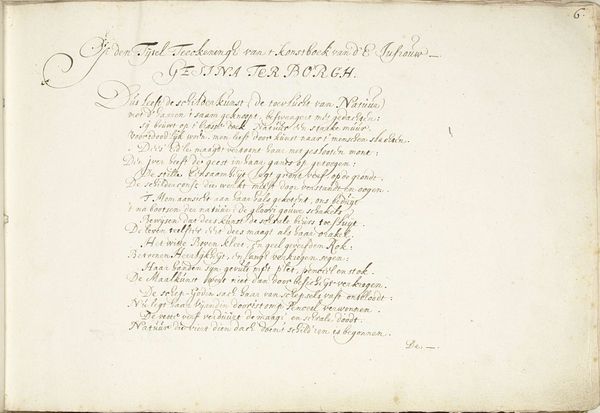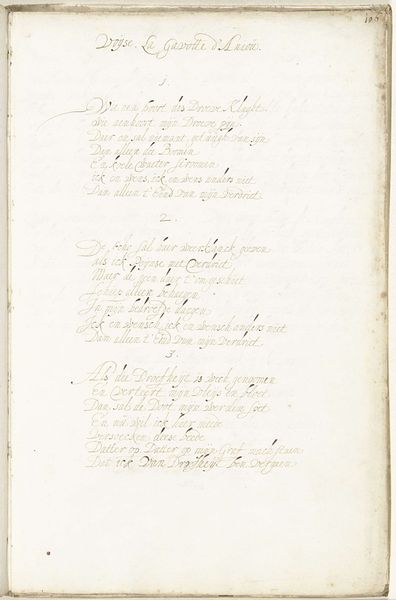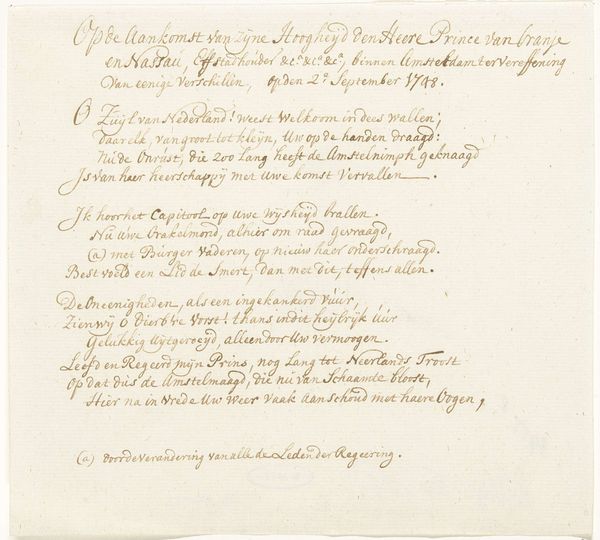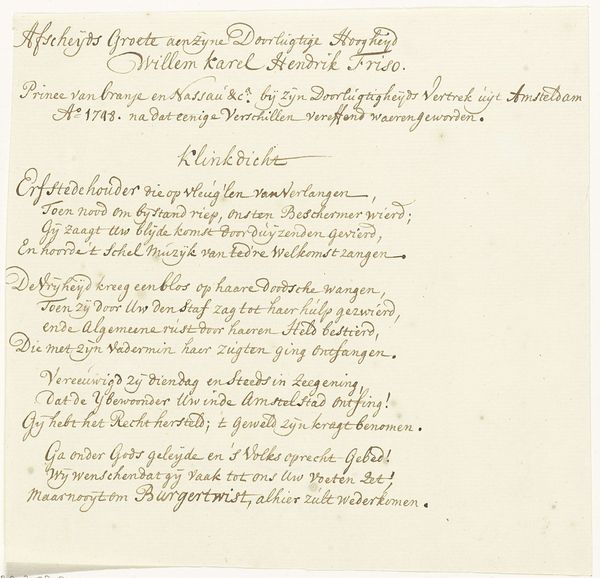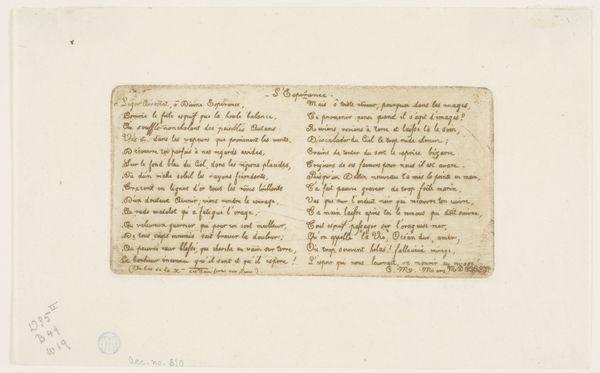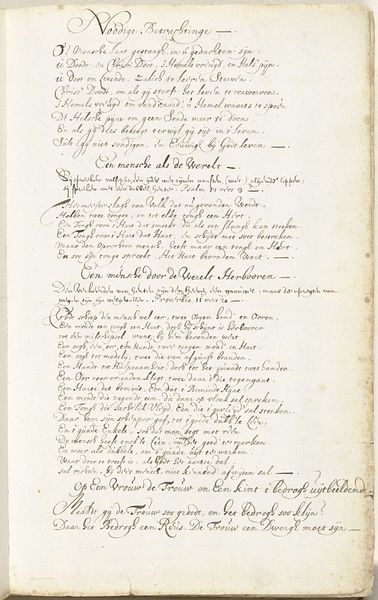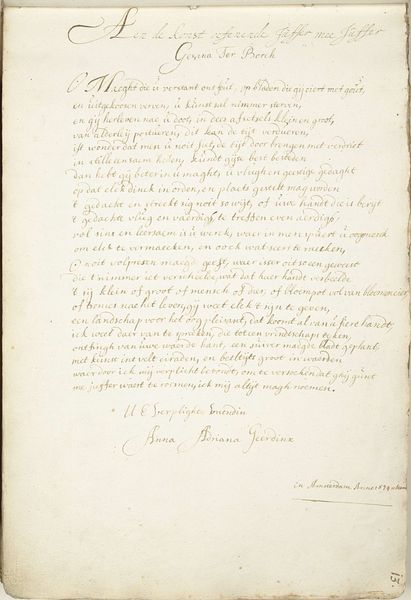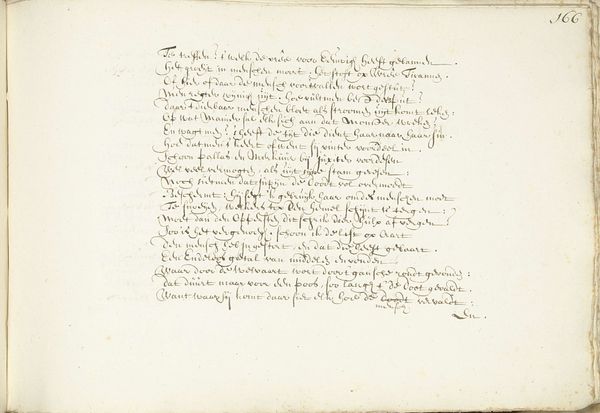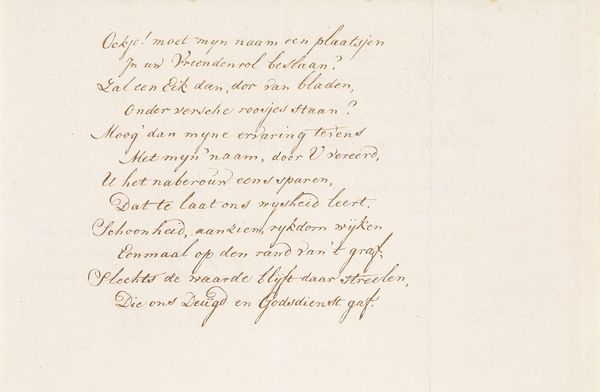
Dimensions: height 243 mm, width 360 mm
Copyright: Rijks Museum: Open Domain
Curator: This drawing, titled "Triomflied over de Schilderkunst en de Dood (deel 1)", or "Triumphal Song About Painting and Death (part 1)," created around 1660 by Henrik Jordis, offers a fascinating insight into the artistic discourse of the Dutch Golden Age. It's ink on paper, with clear signs of age in the fading of the text. Editor: It’s delicate. The script, while faded, still flows gracefully across the page. The entire piece breathes transience, doesn't it? A quiet meditation on mortality and art. Curator: Indeed. Jordis was clearly concerned with the act of creation and its relationship to time, labor, and even oblivion. Consider how the fading ink physically embodies the decay it describes. The materiality of the artwork directly mirrors its theme. And we should also take a look at the paper itself, perhaps the sheet comes from a family owned mill, with strong ties to bookbinders of the time. Editor: And structurally, notice the balance. The lines of text create a visual rhythm, drawing the eye across the composition, even without strong contrasts in color or value. The negative space becomes almost as important as the written word. The poem appears to build incrementally from upper-left to the lower-right, with short pauses and shifts on both halfs. It brings forth a great unity. Curator: That harmony definitely reflects broader cultural currents, especially when discussing the vanity and inevitable passing of art. We should consider, too, how this particular example functions as part of a larger network. Where exactly did this drawing originate, for example? And how many artists would've seen this page, handled it, discussed its ideas? The consumption and circulation are just as crucial as its formal qualities. Editor: True. Yet the impact still rests upon Jordis’ artistic decisions, his choice of script, layout, even the pressure he applied to the pen. By focusing on the surface, we glean so much about the underlying sentiment and skill that constructed this visual argument. Curator: Well, I think both our angles show how rewarding engaging with this piece is. By considering the creation, material history, and even modes of artistic composition of works such as Jordis', we deepen our comprehension of artistic ingenuity itself. Editor: Agreed. "Triomflied" is beautiful evidence of how even the smallest, most fleeting gesture can contain multitudes.
Comments
No comments
Be the first to comment and join the conversation on the ultimate creative platform.

